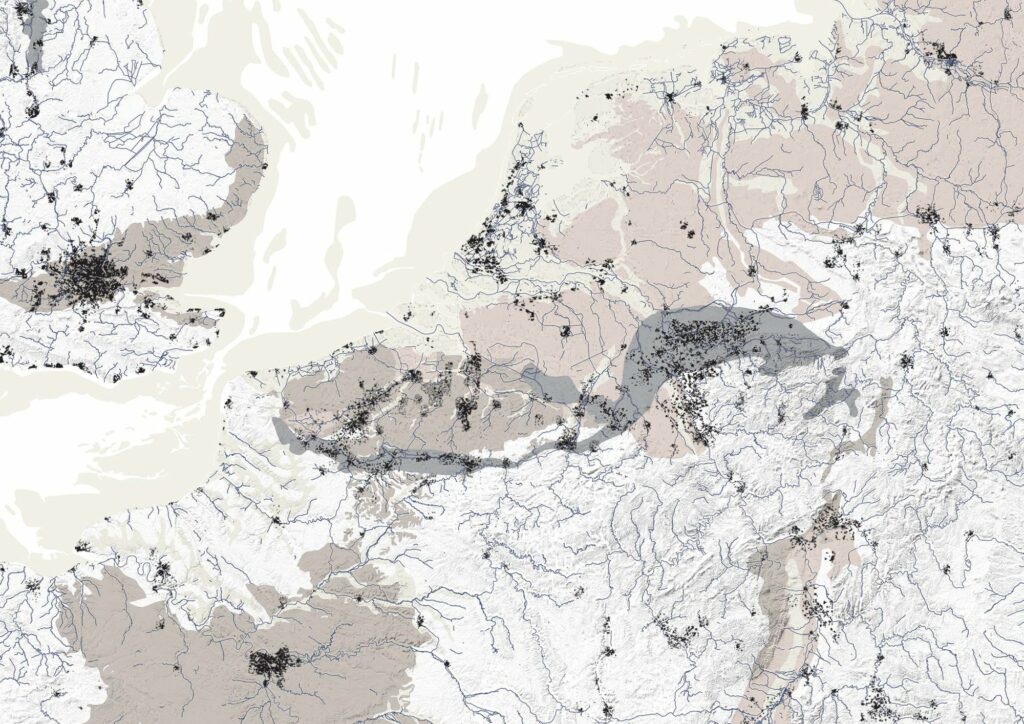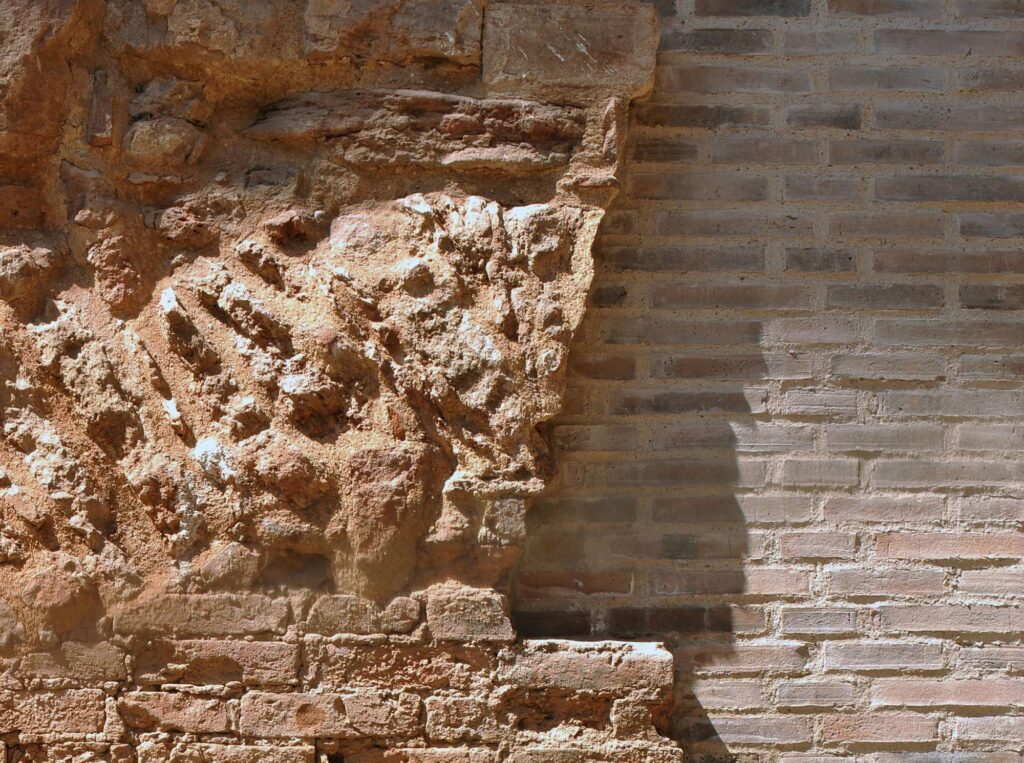Architecture and Geology
A perspective from contemporary architectural practice

What is the relation between the forces that shape buildings and those that shape the earth’s surface? How are the imaginative powers of architects heightened by their knowledge of geological processes? How is their handling of all the cultural, economic and material constraints on their practice enriched by exposure to scientific discipline?
The conference (Architecture and Geology) gave us a parade of character types from the architectural profession: Wood the crank, Viollet-le-Duc the revanchist, Street bending dubious science to sectarian faith, and Cockerell the clubbable professor. This identity parade prompted a sensation of recognition in anyone familiar with contemporary practice: Eisenman blagging maps into rocky forms in Compostela, Zaha Hadid representing flux, and thereby freezing it into changeless fixity in the Maxxi in Rome.
For every Schinkel, apparently ahead of the scientific thinking of their time, there are hundreds using the latest intellectual novelty as grist to their creative mill – as a barely reflected prompt to the imagination. There are perhaps a handful who develop the analogy between scientific discipline and practice, as a form of leverage for respectability or cultural authority – a useful tactical manoeuvre in a profession where the parameters are mostly set by others.
The earth sciences are useful to architects… for as long as they are useful. The concentration of case studies in the eighteenth and nineteenth centuries spoke of a rich historical specificity. The understanding of the earth passed rapidly from a creation mythology to a complex model of deposits and erosions, assembled and refined by empirical observation and deduction. In the same period, practitioners of architecture sought legitimation and authority, as well as the inspiration to respond to unprecedented challenges. Legitimacy passed from historically accumulated convention to attempts at a discipline grounded in first principles.
In this sense, the case studies presented at the conference are like a missing chapter from Peter Collins’ Changing Ideals in Modern Architecture. Collins examines the analogies pursued by architectural theorists of the eighteenth and nineteenth centuries – biological, mechanical, linguistic – in search of a quasi-scientific foundation for architecture. It is a history of false and misleading analogies – however fruitful they proved for individual creators and specific works.
The narrative, advanced by Adrian Forty, of the progressive disenchantment and marketisation of stone throughout the twentieth century was tantalisingly plausible. However, the shift from localised and symbolic use of stone to extensive cladding appeared to predate the expansion of the world stone market. The example of Finlandia Hall fitted neatly into this narrative… but on closer examination it wriggles free into inconvenient complexity. Aaltos’ building houses an auditorium in the form of the theatre at Delphi in a now-sacrificial shell of Carrara marble, embedded like a rock in a landscape scattered with glacially smoothed granite outcrops. One of its stories is that of the absurd but determined cultural longing of a parvenu culture for imaginary roots in the distant Mediterranean – a story with many echoes in architectural history. The idea of a modern fall into meaninglessness doesn’t do justice to this or many other works.

From the Ringstrasse to the Chicago Loop, it is clear that the twentieth century opened up vast fields of casual and unwitting experimentation, opening up new forms of failure – yet this story is not confined to stone. Is such technical flakiness the other side of the intellectual vanity that tempted the nascent profession to style itself a science?
The yearning to submit architecture to a master discipline, and draw all its virtues and properties from the exterior, retains an allure today. Yet the complexities of practice, and indeed of collective life in our cities, are such that no singular external narrative comes close to providing satisfactory insight. The only key to the practice of architecture is the study of buildings and cities as they are made and remade. The physical and human sciences feed tangibly into delimited parts of the discipline; more broadly, they might prompt engaging digressions; focused with care, the complex processes they describe might provide productive analogies for the complex processes which tend to escape professional control.
The earth sciences offer interesting perspectives on the territorial scale that frames contemporary architectural practice: the concentration of half the world’s growing population into one percent of its landmass; the spread of populations into floodplains, coastal plains, and up hillsides, where cyclical actions of atmosphere and surface threaten various forms of catastrophe. Yet architectural practice has at present little serious to offer at this larger scale, so any intellectual traffic is one-way. Secchi Vigano’s proposals for a newly ‘porous’ Grand Paris offered an intriguing glimpse of a form of practice engaging with the deep structure of a territory, using geology both as a filter of analysis and as an analogy for the complex material and social metabolism of the city.
At a more mundane level, while large new buildings and bold new settlements fill the architectural media, the majority of architectural practice relates to the adaptation of existing structures. Both at the scale of the building and at that of the city, architecture remains a discipline of remaking, an endless cycle of deposits and erosions. This is perhaps best captured in Victor Hugo’s Notre Dame de Paris: ‘The greatest products of architecture are not so much individual as they are social works; rather the children of nations in labour than the inspired efforts of men of genius; the legacy of a race; the accumulated wealth of centuries, the residuum of the successive evaporations of human society – in a word, a species of [geological] formation.’ Through a well-observed geological analogy, the young Hugo evokes the slow accumulation of unrelated actions and destructions, and the complex exchange of energy between people and things, in Paris’ foremost urban artefact.
This, I’d suggest, is the relevance of geology for contemporary practice: not the delusion of practice as a science, and neither the figure of the architect-demiurge casting matter into form, nor the architect-alchemist channeling the energy of living stones; but rather a sobering analogy of a process beyond the individual, which leaves behind residues, some of which last far beyond one lifetime, while others are restlessly consumed.
